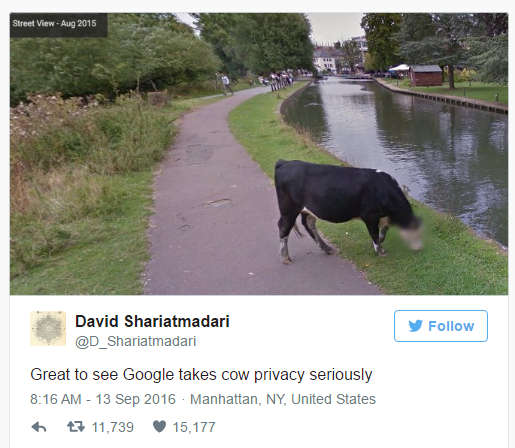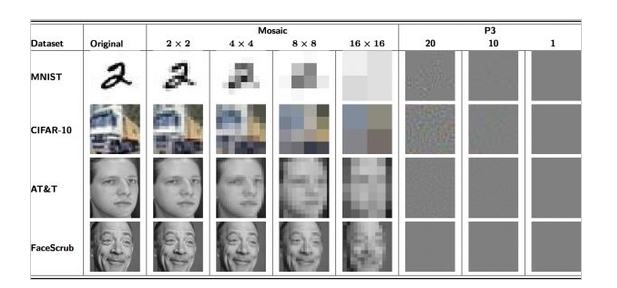A photo recently taken by Google Street View uses automatic coding technology to create a mosaic on the face of a cow. The photo was mad on Twitter, causing thousands of episodes.

"It's nice to see that Google takes the privacy of cows so seriously." And the person in charge at Google also stated that it is really overheating to mosaic the cows, but in order to protect privacy or sensitive information, we are usually used to Photo code.
Think this will protect privacy? Naïve. Researchers at the University of Texas, Texas, recently developed a "reverse mosaic" technology that can restore coded photos in minutes.
According to understanding, this function is very powerful, whether it is a blurred image on a video or a mosaic-processed image, it can be easily done.
The researchers used Torch, an open source software, and tested some of the web material. The results showed that the images can achieve extremely high accuracy. However, the current picture can only be identified instead of restored, in other words, the software can find the original image that matches the picture, but can't realize the true “code removalâ€.

According to the experiment, the computer's recognition rate for YouTube videos reached 80% - 90%, and even if it is the mosaic picture with the most "mist in the fog", the accuracy rate can still reach 50% - 70%.
If you use Privacy-Preserving Photo Sharing (P3), an image encryption tool developed by the University of Southern California, the recognition success rate will be greatly reduced. However, as opposed to adopting more advanced encryption tools, it is better to not send pictures involving personal privacy to the Internet. If it is really compelling, it is also recommended that it be thoroughly blacked out. For example, Google Maps is completely black in some areas involving confidentiality.
Recommended reading:
New face recognition height: no face recognition!
USB 3.0 is the future and the new generation in transmission tech, with the following advantages: Super speed – It`s 10 times faster than its predecessor and backward compatible with all USB 2.0 interfaces. It uses a 9-pin connector with 4 pins compatible with USB 2.0 and another 5 pins for bi-directional data transfer.
External Differences
The USB 3.0 connector is blue.
The top 5 pins provide the two-way data transfer.
The bottom 4 pins provide backward compatibility with USB 2.0.
Note: All USB 3.0 Interfaces are blue
Usb 3.0 Cable,Usb3 Cable,3.0 Usb Port,Micro Usb 3.0 Cable
UCOAX , https://www.ucoax.com